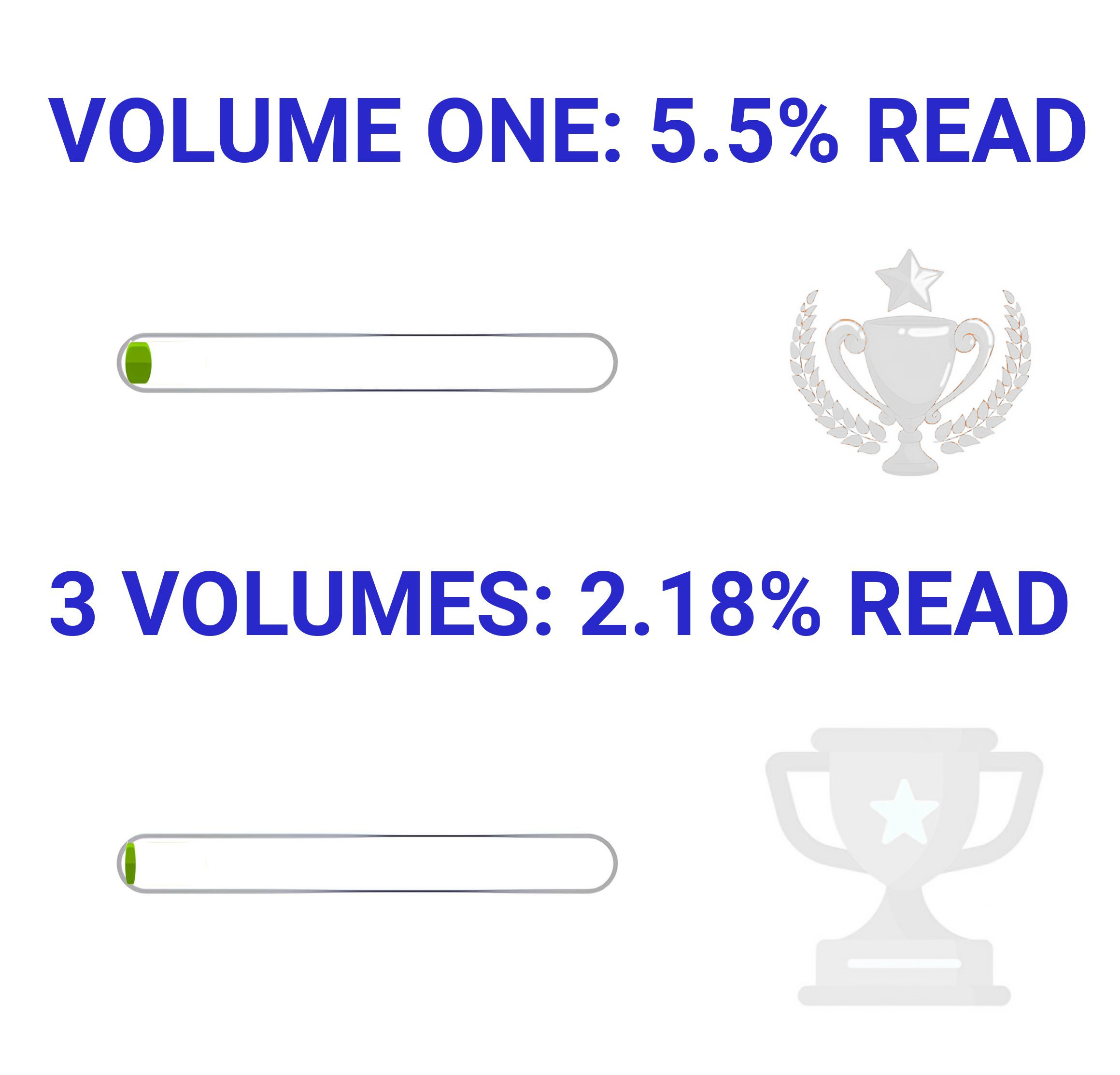Welcome to baby Marxist rehabilitation camp.
We are reading Volumes 1, 2, and 3 in one year. (Volume IV, often published under the title Theories of Surplus Value, will not be included in this particular reading club, but comrades are encouraged to do other solo and collaborative reading.) This bookclub will repeat yearly until communism is achieved.
The three volumes in a year works out to about 6½ pages a day for a year, 46⅔ pages a week.
I'll post the readings at the start of each week and @mention anybody interested. Let me know if you want to be added or removed.
We currently have 58 members!!! I expect a certain drop-off rate, but I'll be thrilled if a dozen or couple dozen read it.
If you've made it this far, you've already read ¹⁄₁₈ of Volume I. The first three weeks are the hardest, after that it'll be quite easy, and only requires 20 minutes a day (endurance is key).
Just joining us? It'll take you about 2-3 hours to catch up to where the group is. You can do that on one long bus ride.
Archives: Week 1
Week 2, Jan 8-14, we are reading Volume 1, Chapter 2 'The Process of Exchange', PLUS Volume 1, Chapter 3, Section 1 'The Measure of Values' PLUS Volume 1, Chapter 3, Section 2 'The Means of Circulation'
In other words, aim to get up to the heading '3. Money' by Jan 14
Discuss the week's reading in the comments.
Use any translation/edition you like. Marxists.org has the Moore and Aveling translation in various file formats including epub and PDF: https://www.marxists.org/archive/marx/works/1867-c1/
Ben Fowkes translation, PDF: http://libgen.is/book/index.php?md5=9C4A100BD61BB2DB9BE26773E4DBC5D
AernaLingus says: I noticed that the linked copy of the Fowkes translation doesn't have bookmarks, so I took the liberty of adding them myself. You can either download my version with the bookmarks added, or if you're a bit paranoid (can't blame ya) and don't mind some light command line work you can use the same simple script that I did with my formatted plaintext bookmarks to take the PDF from libgen and add the bookmarks yourself.
Resources
(These are not expected reading, these are here to help you if you so choose)
-
Harvey's guide to reading it: https://www.davidharvey.org/media/Intro_A_Companion_to_Marxs_Capital.pdf
-
A University of Warwick guide to reading it: https://warwick.ac.uk/fac/arts/english/currentstudents/postgraduate/masters/modules/worldlitworldsystems/hotr.marxs_capital.untilp72.pdf
-
Reading Capital with Comrades: A Liberation School podcast series - https://www.liberationschool.org/reading-capital-with-comrades-podcast/

I'll be honest, some of the discussion in this week's thread especially on the emphasis on fiat money is concerning to me.
In order to be a rocket scientist, you have to start out with the fundamentals like simple forces, objects sliding down frictional planes, and Newton's law. If advanced physics presents things which appear to contradict the fundamentals, it is not necessarily because the fundamentals are obsolete. It remains to be proven that the fundamentals have actually changed in substance. Apparent contradictions emphasize the importance of fundamentals, because without them, the advanced topics are impossible to comprehend.
Likewise, fiat money is indeed an interesting topic — but it is not the principal question on which Capital rests. If fiat money is different from money as presented in Chapter 3, then it is because it is a further development of money that requires, in any case, an understanding of commodity money as a necessary prerequisite.
I am unconvinced fiat money is drastically different from commodity money. Chapter 3 has all the basic elements for understanding fiat money. I'll make an effortpost in the comments if I can, possibly later today.
In broad strokes:
All good points, but it should also be noted that (at least as I understand it) the US dollar is a commodity because it is the only thing used to buy/sell oil internationally (until recently).
In general the dollar is used as the "backbone" of most traded commodities, not just oil, though oil is obviously very important as it was (and still basically is) the major power source for all transportation on Earth. So I suppose it's a commodity in that sense, yes.
(though I think the biggest factor for the dollar's strength is that the dollar is backed by the Federal Reserve and various US institutions, which will do anything - including creating trillions of dollars out of thin air - to support it, while other countries (like China) would be much more nervous about that kind of financial wizardry. It's worth noting that others disagree on this view as the dollar as this very strong, vital force in the economy; Radhika Desai is essentially of the opinion that the dollar was never actually as strong as its proponents suggested, and that the history of the dollar since the end of WW2 has actually been weakness; stumbling from crisis to crisis as the US attempts to enforce it upon the world and is rebuffed)